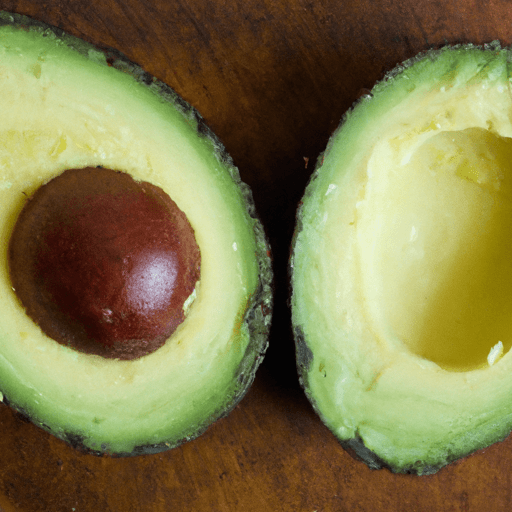Unleashing the Delight of Avocado Half
Avocado, known as the “alligator pear” due to its appearance, is a fruit packed with nutritional goodness and a luxurious buttery texture. The succulent creaminess of the avocado is often showcased in various recipes, but today, let’s dive into the tantalizing world of the avocado half.
A Taste Sensation Like No Other
When you slice open an avocado and witness its vibrant green hue, you know you’re in for a delicious treat. The taste of an avocado half is unrivaled in the fruit kingdom. With a subtle nutty flavor and a pleasingly smooth texture, avocado halves are a delight to your taste buds.
The creamy richness of avocado halves is often likened to butter, making them a perfect addition to sandwiches, wraps, and salads. Their mild taste effortlessly pairs with a range of ingredients, elevating any dish they grace with their presence.
Versatile Uses in Culinary Delights
Avocado halves are a versatile ingredient that can enhance both savory and sweet dishes. Here are a few creative ways you can enjoy the goodness of this magnificent fruit:
Classic Guacamole: Mashing avocado halves with a squeeze of lime juice, cilantro, jalapeños, and tomatoes creates the quintessential guacamole. Devour it with tortilla chips or spread it on your favorite burrito.
Avocado Toast: Spread avocado halves on lightly toasted bread, sprinkle with salt, and add a touch of lemon juice for a quick and satisfying breakfast or snack.
Salads: Toss chunks of avocado halves into vibrant salads for a burst of flavor and creamy texture. They complement fresh greens, juicy tomatoes, cucumber, and tangy dressing perfectly.
Smoothies: Believe it or not, avocado halves can transform your average smoothie into a velvety, nutrient-packed delight. Blended with fruits like banana, spinach, and mango, they add a creamy thickness that makes every sip luxurious.
Baking: Avocado halves can even make their way into baked goods, adding moisture and healthy fats. Try substituting butter or oil with mashed avocado halves in cakes, cookies, and brownies for a healthier twist.
Nutritional Powerhouse
Avocado halves are more than just a tasty addition to your favorite recipes; they are also a nutritional powerhouse. Packed with heart-healthy monounsaturated fats, avocados are an excellent source of vitamins C, E, and K. They also contain essential minerals like potassium and folate.
The high fiber content in avocados helps regulate digestion and contributes to a feeling of fullness. Additionally, avocados are low in carbohydrates and naturally cholesterol-free. So, next time you indulge in an avocado half, rest assured knowing you are nourishing your body with vital nutrients.
A Piece of Avocado History
Avocado halves have graced human tables for centuries. Originating from Central and South America, avocados were an essential part of the Aztecs’ diet and culture. The word “avocado” is derived from the Aztec term “ahuacatl,” meaning “testicle” due to its shape and supposed aphrodisiac properties.
In the early 20th century, avocados gained popularity outside of their native regions, with cultivation spreading worldwide. Nowadays, avocados are beloved and consumed in various cultures, showcasing their versatility and unrivaled taste.
An Avocado Half Adventure Awaits You
Whether you’re a longtime fan or a newcomer to the avocado scene, the avocado half holds endless culinary possibilities. From spreadable toppings to velvety smoothies, this versatile fruit can take your dishes to new heights.
So, the next time you gaze upon the vibrant green flesh of an avocado half, embrace the deliciousness and savor its delightful taste. Step into the remarkable world of avocado halves and unlock their true potential in your cooking endeavors!
Avocado Half
Origin and Common Uses:
- Avocado is a fruit that originated in Central and South America. It is believed to have been cultivated for thousands of years, with evidence of avocado consumption dating back to at least 8,000 BCE in Mexico.
- The avocado is most commonly used in culinary applications, particularly in savory dishes. It is a prominent ingredient in guacamole, a popular Mexican dip or spread. Avocado halves are often used as a vessel for filling with various ingredients, such as dressings, salads, eggs, or seafood.
- Avocado halves are also commonly sliced and added to sandwiches, wraps, and burgers. The creamy texture and mild, buttery flavor make it a versatile ingredient in both savory and sweet recipes.
Nutritional Benefits:
- Avocado is highly nutritious and is a good source of healthy fats. It is particularly rich in monounsaturated fats, which are considered beneficial for heart health.
- Avocado halves are also a good source of dietary fiber. They contain around 13 grams of fiber per 100 grams, promoting digestive health and aiding in weight management.
- Additionally, avocados are a good source of vitamins and minerals. They are particularly high in vitamin K, vitamin E, vitamin C, and various B vitamins. Avocado halves also contain potassium and folate.
Unique Properties and Historical Significance:
- Avocado halves have a unique property of oxidizing quickly once exposed to air. The flesh of an avocado will often turn brown when exposed to oxygen, although this process can be slowed down or prevented by adding acidic ingredients or wrapping the flesh tightly.
- In ancient times, avocados were valued not only for their culinary use but also for their believed medicinal properties. They were used to treat various ailments, including stomachaches and skin conditions.
- The word “avocado” comes from the Spanish word “aguacate,” derived from the Nahuatl (Aztec language) word “ahuacatl,” which means “testicle.” This references the shape of avocados and their supposed aphrodisiac effects in ancient Aztec culture.
- Avocado halves gained popularity worldwide in the 20th century and have since become a staple ingredient in many cuisines. They are highly sought after for their nutritional benefits and creamy texture.




Use the share button below if you liked it.
It makes me smile, when I see it.